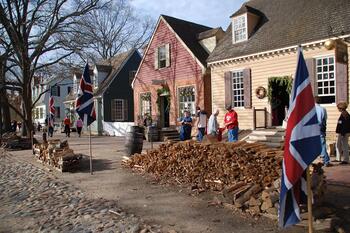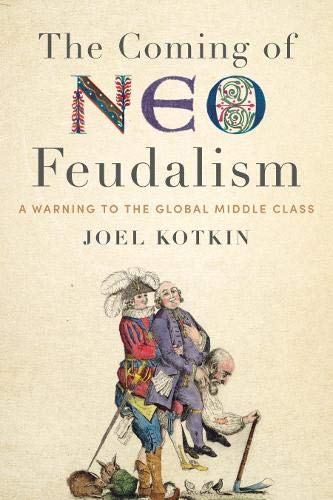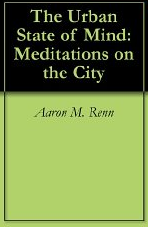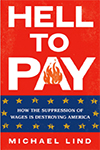
During the earliest months of the pandemic, when daily rhythms fell apart and the future felt strangely suspended, I began walking Colonial Williamsburg with my son. Schools were closed. Playgrounds were wrapped in caution tape. So much of childhood had migrated to screens. But Williamsburg’s brick streets and greens remained open. We walked simply to be somewhere shaped at a human scale and outside. The place offered continuity at a time when almost everything else was provisional. Those mornings were not nostalgic. They were steadying.
Williamsburg has always been more than a historical attraction. It is a town rebuilt to demonstrate how a community once functioned—how work, worship, trade, political argument, and daily life fit together. It gives form to the idea that civic life is not just something we think or feel. It is something we do together in shared space.
This point has gained renewed attention. In a recent article in The Atlantic, Clint Smith describes Williamsburg’s ongoing shift away from a narrow, comfortable version of the colonial era and toward a fuller account of the community that existed here: enslaved and free, wealthy and laboring, those with power and those subjected to it. He makes clear that this is not a simple or smooth transition. Williamsburg has always been contested ground—its meaning argued over, revised, defended, and reimagined.
Richard Handler and Eric Gable saw this clearly in their book The New History in an Old Museum. Williamsburg was never a static tribute to the past. It was always a living negotiation among public memory, tourism, scholarship, and national identity. The question was never whether the story would change. The question was how and with what degree of responsibility.
Today, Williamsburg is admirably choosing to lean into complexity. It is not rejecting the founding. It is rejecting simplification. It is choosing honesty over comfort, and seriousness over spectacle.
I saw this one morning outside a carpenter’s shop. An interpreter was portraying an enslaved craftsman, explaining how some skilled laborers could negotiate wages that were partially their own, sometimes allowing them to petition for freedom. A visitor, unsettled, interrupted: “But if he was that talented, why didn’t he just leave?” The interpreter paused—not to correct her, but to answer in full. Leaving meant abandoning one’s family, one’s community, and every relationship that structured daily life. It meant entering a world where capture was likely and legal protection nonexistent. He spoke simply, without theatrics. The group fell silent. For a moment, the past was not symbolic. It was human, difficult, and real.
That is what Williamsburg does at its best. It holds the complexity of the American founding without flattening it into either pride or guilt. The founding was not pure, and it was not fraudulent. It was aspirational and incomplete. The same society that articulated universal natural rights also denied those rights to millions. Acknowledging that fact does not undermine the founding. It clarifies the scale of the promise the nation set in motion.
Williamsburg shows that liberty was never something handed down whole. It was constructed—argued over, negotiated, lived, and sometimes painfully delayed. It was work. And it remains work.
The physical environment of Williamsburg makes this visible in ways no textbook can. The scale of the town slows the pace of thought. Narrow streets require awareness. Greens and benches invite lingering. Buildings face one another, encouraging encounter rather than retreat. Even when workshops are quiet, the arrangement of work-yards and service buildings reflects a world structured by apprenticeship, patience, and interdependence. Taverns and coffee houses hint at how political identity formed around tables, not hashtags.
Williamsburg’s design demonstrates that civic life is embodied. It happens when people must encounter one another in common space. It depends on proximity.
This stands in sharp contrast to much of American life today. Many of us now experience history, politics, and identity primarily through screens. The digital sphere encourages performance rather than deliberation, certainty rather than understanding, reaction rather than reflection. The past becomes something to wield. Citizenship becomes a brand. The public square becomes a stage.
Williamsburg slows that down. It requires presence. It requires patience. It invites the possibility that understanding takes time.
The pandemic revealed how vulnerable our civic habits had already become. When schools, congregations, sports leagues, arts programs, civic organizations, and neighborhood associations paused, people did not just lose activities. They lost the places where shared memory is formed. Without shared memory, trust erodes. Without trust, civic life fractures.
Walking through Williamsburg during that time, I realized that continuity is not something one remembers. It is something one participates in. The place reminded us that earlier generations lived through crises they did not choose, and did not fully understand while they were living them, and still built institutions and communities meant to outlast them. The past is not instructive because it is reassuring. It is instructive because it shows that our challenges are not singular and that renewal is possible.
Williamsburg does not offer answers. It offers perspective. It demonstrates that history is not settled. It continues to press on the present. And it suggests that how we understand the past shapes whether we believe the future can be built in common.
One afternoon during our Covid walks, my son asked me whether people in the eighteenth century knew they were “in history.” I told him that people then were the same as we are now—trying to make decisions without knowing what would last and what would fade. They did not feel like figures in a story. They felt like ordinary people living through uncertainty. And that is true of us. We are not looking back at history. We are inside it.
My son and I continue to visit Williamsburg—not because the place is perfect, and not because the story it tells is finished, but because it treats history as something serious enough to matter to the present. It does not romanticize the past, and it does not weaponize it. It treats the past as an inheritance.
And like any inheritance worth having, it must be cared for, tended to, and carried forward.
The past is not fixed. Neither are we. A free society does not need a flawless origin story. It needs a citizenry willing to learn, to remember, and to continue the work that was left unfinished.
That work belongs to us.
Samuel J. Abrams is a professor of politics at Sarah Lawrence College, a senior fellow at the American Enterprise Institute, and a scholar with the Sutherland Institute.
Photo: Colonial Williamsburg by Humberto Moreno, via Flickr, under CC 2.0 License.












